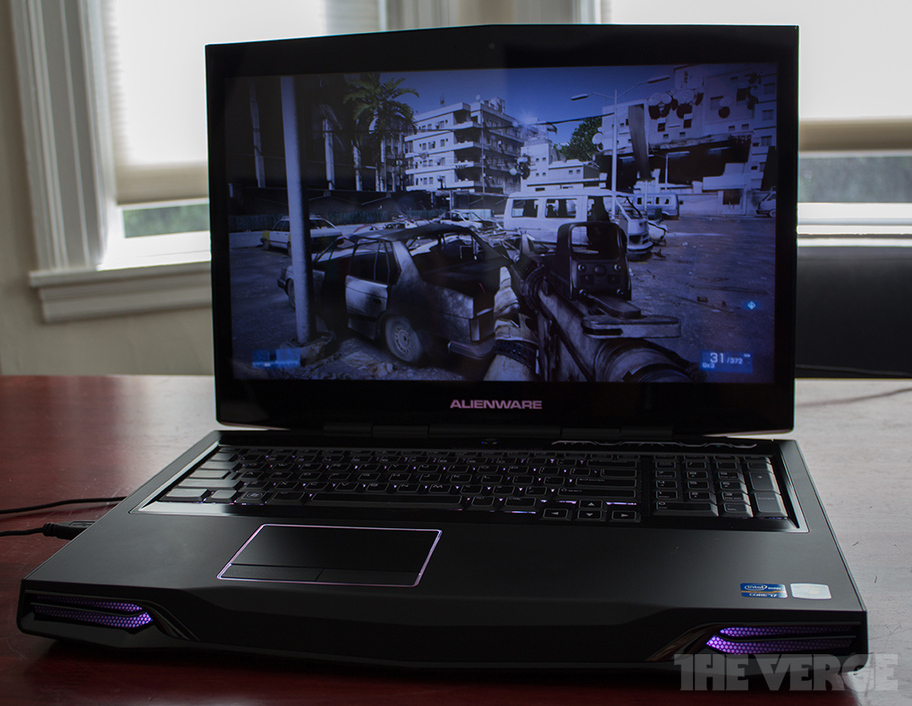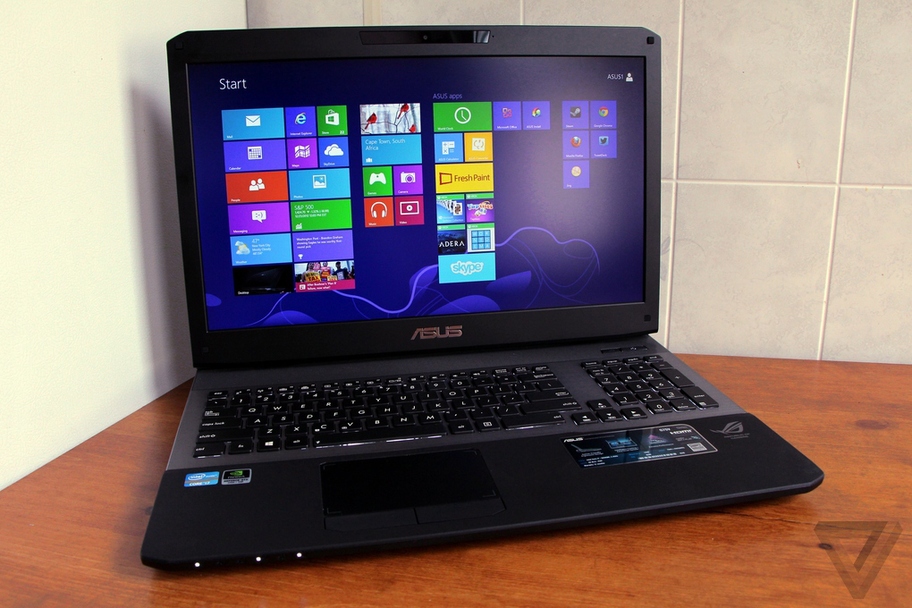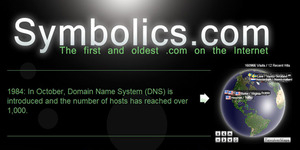Saturday 22 August 2015
Thursday 20 August 2015
TECHNOLOGY : THEN & NOW
Wednesday 19 August 2015
DON'T MISS TO KNOW ABOUT THIS FACTS !
We all love Internet and with amazing technological advancements, there is absolutely nothing impossible these days. Technology and of course Internet has become an integral part of our lives.That's why we ask everyone, What's Technology for? and we get an answer, its for everything. So if you are an Internet lover and Tech freak, you must be aware of these amazing and rarely known facts.
Lets begin, hope you will know a lot that you were unaware of. And if you know some facts that we missed, to share with us.
1. Amazon, originally was a printed book seller company, now it sells more e-books than printed books.
2. The first banner advertisement on Website was introduced in the year 1994.
3. Facebook reports over 1 billion registered users. Were it a country, it would have had 3rd largest population in the World.
4. During 1980s, an IBM computer was not considered to be 100% compatible if it could not run Microsoft Flight Simulator.
5. Did you know that Email was already around before the World Wide Web came?
6. Every month, domain names are being registered at a rate of more than two million!
7. At the end of year 2012, there were total approximately 17 billion devices (which includes computers, tablets and mobile) connected to the Internet.
8. About 1.8 billion people connect to the Internet, only 450 million of them speak English.
9. Did you know how was Bill Gates's house was designed? Using a Macintosh computer.
10. Microsoft Windows tutorial’s another name is ‘Crash Course’. Now we why !
11. The average 21 year old has spent 5,000 hours playing video games, has exchanged 250,000 e-mails, instant and text messages and has spent 10,000 hours on the mobile phone.
12. 70% of virus writers actually work under a contract for an organization.
13. Up until the 14th of September, 1995, domain registration was free.
14. Symbolics.com is the first and oldest registered domain name. It completed 28 years on 15th March, 2013.
15. Mosaic was the first popular web browser which was released in 1993.
16. Sweden has the highest percentage of internet users, they are 75%.
17. A program named “Rother J” was the first computer virus to come into sight “in the wild” — that is, outside the single computer or lab where it was created.
18. While it took the radio 38 years, and the television a short 13 years, it took the World Wide Web only 4 years to reach 50 million users.
19. There are approximately 1.06 billion instant messaging accounts worldwide.
20. Two-thirds of American Internet users shop online.
21. Every minute, 10 hours of videos are uploaded on YouTube.
22. The world’s first computer which was named the Z1, was invented by Konrad Zuse in 1936. His next invention, the Z2 was finished in 1939 and was the first fully functioning electro-mechanical computer.
23. Doug Engelbart had made the first computer mouse in 1964, and it was made out of wood.
24. The average computer user blinks 7 times a minute, less than half the normal rate of 20.
25. Google uses an estimated 15 billion kWh of electricity per year, more than most countries. However, Google generates a lot of their own power with their solar panels.
26. U.S. President Bill Clinton’s inauguration in January 1997 was the first to be webcast.
27. Tim Berners-Lee coined the phrase “World Wide Web” in 1990.
28. The first two video games copyrighted in the U.S. were Asteroids and Lunar Lander in 1980.
29. 220 million tons of old computers and other technological hardware are trashed in the United States each year.
30. Alien Robots used in famous Transformers movie series are so huge, that if all robot parts are laid out end to end, it would stretch from one side of California to the other, about 180 miles.
Lets begin, hope you will know a lot that you were unaware of. And if you know some facts that we missed, to share with us.
1. Amazon, originally was a printed book seller company, now it sells more e-books than printed books.
2. The first banner advertisement on Website was introduced in the year 1994.
3. Facebook reports over 1 billion registered users. Were it a country, it would have had 3rd largest population in the World.
4. During 1980s, an IBM computer was not considered to be 100% compatible if it could not run Microsoft Flight Simulator.
5. Did you know that Email was already around before the World Wide Web came?
6. Every month, domain names are being registered at a rate of more than two million!
7. At the end of year 2012, there were total approximately 17 billion devices (which includes computers, tablets and mobile) connected to the Internet.
8. About 1.8 billion people connect to the Internet, only 450 million of them speak English.
9. Did you know how was Bill Gates's house was designed? Using a Macintosh computer.
10. Microsoft Windows tutorial’s another name is ‘Crash Course’. Now we why !
11. The average 21 year old has spent 5,000 hours playing video games, has exchanged 250,000 e-mails, instant and text messages and has spent 10,000 hours on the mobile phone.
12. 70% of virus writers actually work under a contract for an organization.
13. Up until the 14th of September, 1995, domain registration was free.
14. Symbolics.com is the first and oldest registered domain name. It completed 28 years on 15th March, 2013.
15. Mosaic was the first popular web browser which was released in 1993.
16. Sweden has the highest percentage of internet users, they are 75%.
17. A program named “Rother J” was the first computer virus to come into sight “in the wild” — that is, outside the single computer or lab where it was created.
18. While it took the radio 38 years, and the television a short 13 years, it took the World Wide Web only 4 years to reach 50 million users.
19. There are approximately 1.06 billion instant messaging accounts worldwide.
20. Two-thirds of American Internet users shop online.
21. Every minute, 10 hours of videos are uploaded on YouTube.
22. The world’s first computer which was named the Z1, was invented by Konrad Zuse in 1936. His next invention, the Z2 was finished in 1939 and was the first fully functioning electro-mechanical computer.
23. Doug Engelbart had made the first computer mouse in 1964, and it was made out of wood.
24. The average computer user blinks 7 times a minute, less than half the normal rate of 20.
25. Google uses an estimated 15 billion kWh of electricity per year, more than most countries. However, Google generates a lot of their own power with their solar panels.
26. U.S. President Bill Clinton’s inauguration in January 1997 was the first to be webcast.
27. Tim Berners-Lee coined the phrase “World Wide Web” in 1990.
28. The first two video games copyrighted in the U.S. were Asteroids and Lunar Lander in 1980.
29. 220 million tons of old computers and other technological hardware are trashed in the United States each year.
30. Alien Robots used in famous Transformers movie series are so huge, that if all robot parts are laid out end to end, it would stretch from one side of California to the other, about 180 miles.
Tuesday 18 August 2015
ARTIFICIAL INTELLIGENCE and NANOTECHNOLOGY ''Threaten Civilization''
Artificial intelligence and nanotechnology have been named alongside nuclear war, ecological catastrophe and super-volcano eruptions as “risks that threaten human civilization”. Future machines and software with “human-level intelligence” could create new, dangerous challenges for humanity – although they could also help to combat many of the other risks cited in the report.
Can scientists stop ‘negative’ outcomes that threaten human civilization, according to Global Challenges Foundation?
“The primitive forms of artificial intelligence we already have, have proved very useful. But the development of full artificial intelligence could spell the end of the human race.”
Monday 17 August 2015
THE BEST GAMING LAPTOP : We Review The Most Powerful Portable Computers on Market
Traditionally, gamers have looked to hefty, monstrous machines with stylish designs — though some prefer the term “ostentatious” — for their portable gaming needs. Even as other laptops get thinner, lighter, and sexier, gaming laptops remain bulky and incredibly powerful, making them the best option if you’re looking for a portable — well, relatively portable — computer that can handle the latest games in their full glory.
However, wanting to play games doesn’t necessarily mean you want a gaming laptop. In general, they’re not known for being paragons of portability. None have exceptional battery life, and all need to be tethered to an outlet to game for any extended period of time. If you’re looking for a computer to take to work or class every day, or simply want a machine that can play less taxing games like Team Fortress 2, you don’t want a gaming laptop. But if you want to play all the latest, most demanding games on high settings, and only need to travel on occasion — perhaps to a LAN party with friends, home for the holidays, or simply from your desk to your couch — a gaming laptop is probably a good fit.
But deciding that you want a gaming laptop isn’t the final choice — it’s only the beginning. To learn more about the best gaming options on the market, and to find out which gives you the highest performance for your hard-earned dollar, read on.
These are the 3 most popular gaming laptop

Using an Intel Core i7-3610QM processor, 16GB of RAM, and Nvidia’s GeForce GTX 675M with 2GB of dedicated graphics memory, Samsung's offering is capable of very strong gaming performance. Unlike the other laptops in this price range, the Gamer can manage Battlefield 3 at 1080p on ultra settings at 29fps — but can also play the game at a solid 40fps on high settings. At 1920 x 1080, Borderlands 2 runs smoothly on full settings with particle-heavy PhysX effects on high, and the machine can handle the grueling The Witcher 2 at 1080p on medium settings
 |
| Alienware M17x |
The M17x has a number of configuration options, but the model we reviewed includes a 2.6 GHz Intel Core i7-3720QM processor, 8GB of RAM, and a powerful Nvidia GeForce GTX 680M graphics processor. True to its high-end reputation, the M17x runs Battlefield 3 at 1080p on Ultra settings at a smooth 44fps, plays The Witcher 2 at 45fps on Ultra without Ubersampling, and was able to handle any other game we threw at it with aplomb. The fans are a little loud during heavy gaming, and the metal plates on the underside of the laptop can get pretty toasty — yet another reason to keep the machine off your lap.
 |
| Asus G75VW |
The 17.3-inch laptop has a matte 1080p backlit LED display with virtually no glare, but the panel is a little dim, making whites appear slightly grey and blacks a little washed out. The screen also has a noticeable pixel grid, and the limited range of vertical viewing angles means that there isn’t much room to tilt the screen up and down before colors invert. In addition to the mediocre display, the speaker bar above the keyboard produces tinny, compressed sound. While the problem is somewhat relieved by the subwoofer beneath the left side of the palm rest, music still sounded perfectly.
Everyone’s looking for something different from a laptop, and each of the machines in this roundup have their own strengths and weaknesses. Some users prize a good set of speakers above all else, and some gamers are particularly choosy about the keyboard they use. However, as a whole package, some machines will stand above the rest. Enjoy reading! :)
Tuesday 11 August 2015
TECHNOLOGY FOR DISABLE PEOPLE
When new technologies emerge, too often the concept of accessibility is considered an afterthought or used in ways that do not improve the lives of the people who need assistance, said experts at a recent AAAS event in Washington, D.C.
"I consider it to be one of the most ironic and almost tragic facts that information technology [and] programmable devices probably have the most facile capacity to adapt to human need for assistance, and yet we have not done a very good job applying that technology for that purpose," said Vinton Cerf, vice president and chief Internet evangelist for Google.
15 %
The portion of the world's population that has some form of disability
WORLD HEALTH ORGANIZATION
Cerf was the keynote speaker for a plenary session on "Accessing the Benefits of Science and Technology" at the AAAS Science and Human Rights Coalition Meeting on 27 January. The two-day meeting of the coalition -- a network of 51 scientific and engineering organizations that recognize a role for scientists and engineers in human rights -- focused on the intersections between the human rights of persons with disabilities and the fields of science and technology.
"A lot of people encounter the need for disability assistance in one way or another, and these needs arise in a variety of ways," Cerf noted. A disability may be rooted in genetics, for instance, originate from a traumatic event or come as a byproduct of aging. Cerf himself has hearing problems that likely stem from the treatment he received in the weeks after his premature birth.
VINTON CERF | AAAS/CARLA SCHAFFER
Cerf's wife, Sigrid, is also hearing impaired, having become profoundly deaf at the age of three after developing spinal meningitis. Her life was changed by technology, he said. At the age of 53, Sigrid received cochlear implants. She had always kept her ability to speak, but the implants let her hear. Cerf remembered that when he got home the evening after the surgery, "I discovered I had a 50-year-old teenager…I couldn't get her off the phone."
"We have to come up with incentives, cultural, financial, legal and so on, to cause assistive technologies to come into existence, to be available and to be sustainable," said Cerf.
Accessibility as a Business Opportunity
The financial incentive can be a powerful one, and companies are getting involved in many ways. James Thurston, director of International Accessibility Policy at Microsoft, described an effort by researchers in China to use his company's Kinect technology to create a sign language translator. The Kinect system, originally developed for use with the Xbox gaming system, uses sensors to read the position of a person's body and motion. For use as a translator, the system captures the signs a person makes and a computer program translates them into Chinese or English, both written and spoken. The translator also works in the opposite direction, translating spoken words into sign language.
"To imagine that you can just overlay some accessibility pixie dust that makes a specific application work all right for a person with hearing impairment or a person with motor problems, I think, is overly optimistic."
VINTON CERF, VICE PRESIDENT AND CHIEF INTERNET EVANGELIST FOR GOOGLE
JAMES THURSTON | AAAS/CARLA SCHAFFER
"The implications of that are pretty immediate and amazing," Thurston said.
Companies are not developing technologies for persons with disabilities simply out of a desire to help. Clearly there are social responsibility reasons for providing such technologies, Thurston said, but "Microsoft looks at it as a business opportunity" as well. About 15 percent of the world -- approximately the population of China -- is dealing with some form of disability.
There is now a growing market for accessible technology, he noted. The aging Baby Boomer population and section 508, an amendment to the U.S. Rehabilitation Act that requires the government to develop or acquire only accessible technology, have increased market demand. The features that make products more accessible are now another area over which companies can compete, Thurston said.
And these technologies often have benefits that can be enjoyed by all users. Speech input and adjustable font sizes were two features developed to make computers more accessible to persons with disabilities, but they are now used by everyone.
No Universal Solutions
Despite its tremendous potential, using science and technology to better integrate persons with disabilities into the broader community is complex. "Everybody is not the same," Cerf noted. "The same solution does not work for everyone."
Technology developers also need to think more about how to integrate accessibility into applications early in the process, Cerf said. "To imagine that you can just overlay some accessibility pixie dust that makes a specific application work all right for a person with hearing impairment or a person with motor problems, I think, is overly optimistic," he said. "You really have to think 'how is this application going to be made usable for someone with a disability.'"
A web page, for instance, is visually oriented and navigating through one with a screen reader, while possible, can be awkward and frustrating if audible navigation wasn't considered during the site's design, he said.
Cerf praised Microsoft and Apple for their efforts in this field and admitted that at Google, there was room for improvement. But he cited one effort at his company to train every new engineer in accessibility methods. "This is fundamentally critical to making information technology accessible to people who need help," he said.
ERIC MATHEWS | AAAS/CARLA SCHAFFER
More or improved technology isn't always the answer, however, noted another speaker, Eric Mathews, an advocacy associate at Disability Rights International. Mathews spoke about his organization's efforts to end segregation for persons with disabilities. "Institutions and segregated residential facilities are a violation of the human right to live and participate in the community," he said.
But too often, he noted, efforts to help the people in these segregated facilities consider only how technology can be added to those facilities, such as supplying computers to an orphanage. "It's meant to give these children a better life," he said, but companies, donors and nations need to think more about how to use technology to get people out of these institutions and back with their families or placed in family-based care in the community. We need "to think about the ways that science can challenge the need for institutional care," Mathews said.
But technology can only go so far. Cultural biases may be a huge barrier and even limit the availability of existing technology. "There's some cultures where people who need this assistance don't get it because it's culturally ignored," Cerf said. "This is a reason why the Convention on the Rights of Persons with Disabilities is so important."
Monday 10 August 2015
3D TECHNOLOGY ?
Stands for three-dimensional technology that offers a wide array of possibilities in near future in almost every walk of life and especially in entertainment segment.
The use of 3d technology in TVs, laptops and other products is growing because the basic content required to support such products includes sports and movies.
Lately, the technology has been successful in earning quite a momentum as a valid, widely adopted entertainment technology.
3D in ART
3D in ANIMATION
3D in ARCHITECTURE
3D in ENTERTAINMENT
ENJOY THE VIDEO :)
Subscribe to:
Posts (Atom)



























































